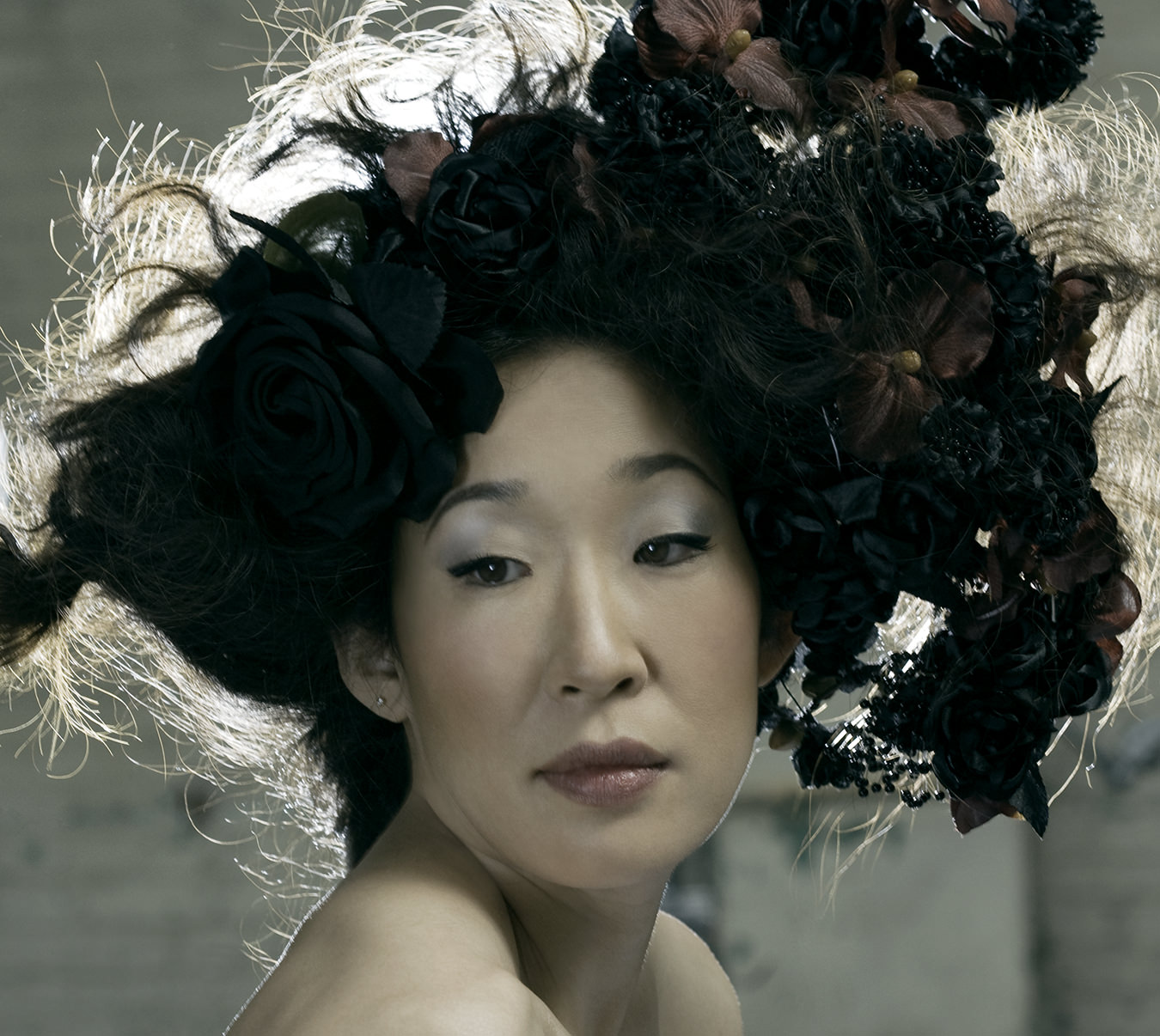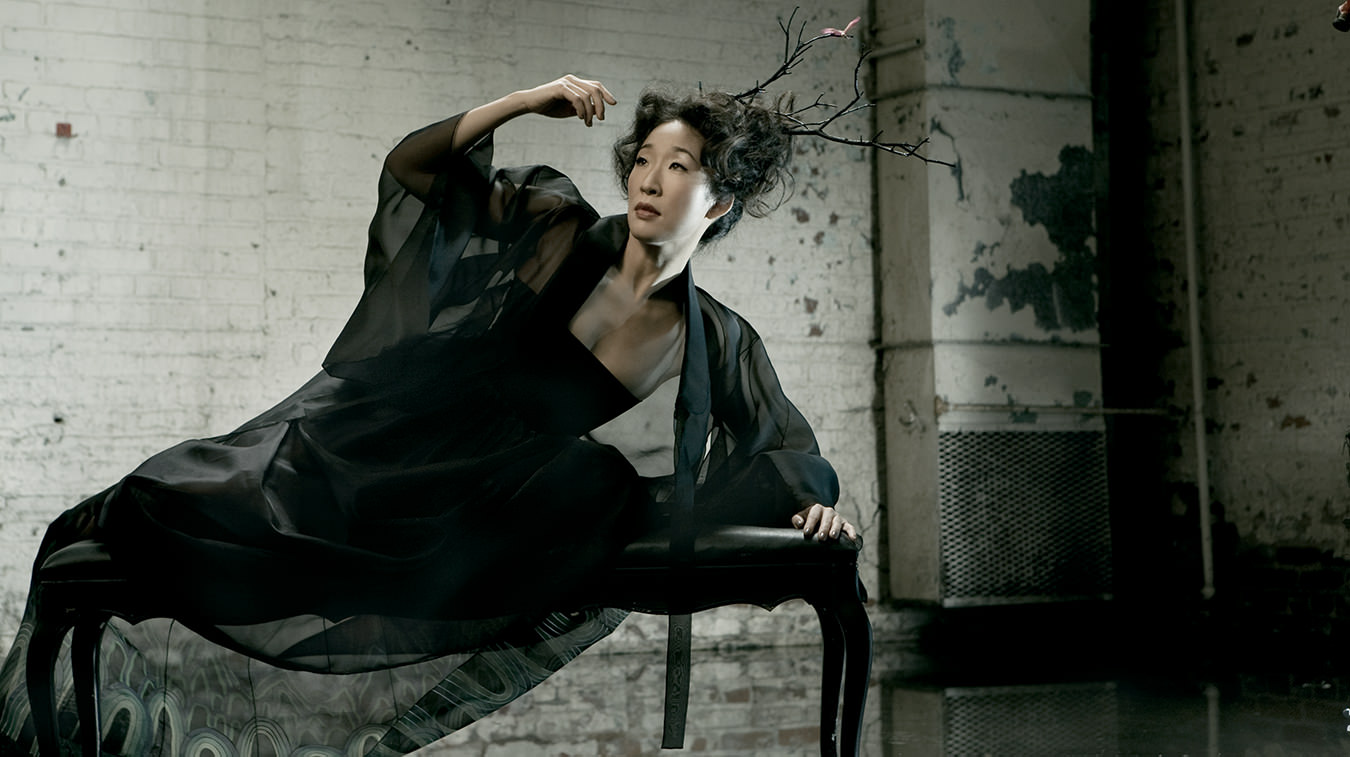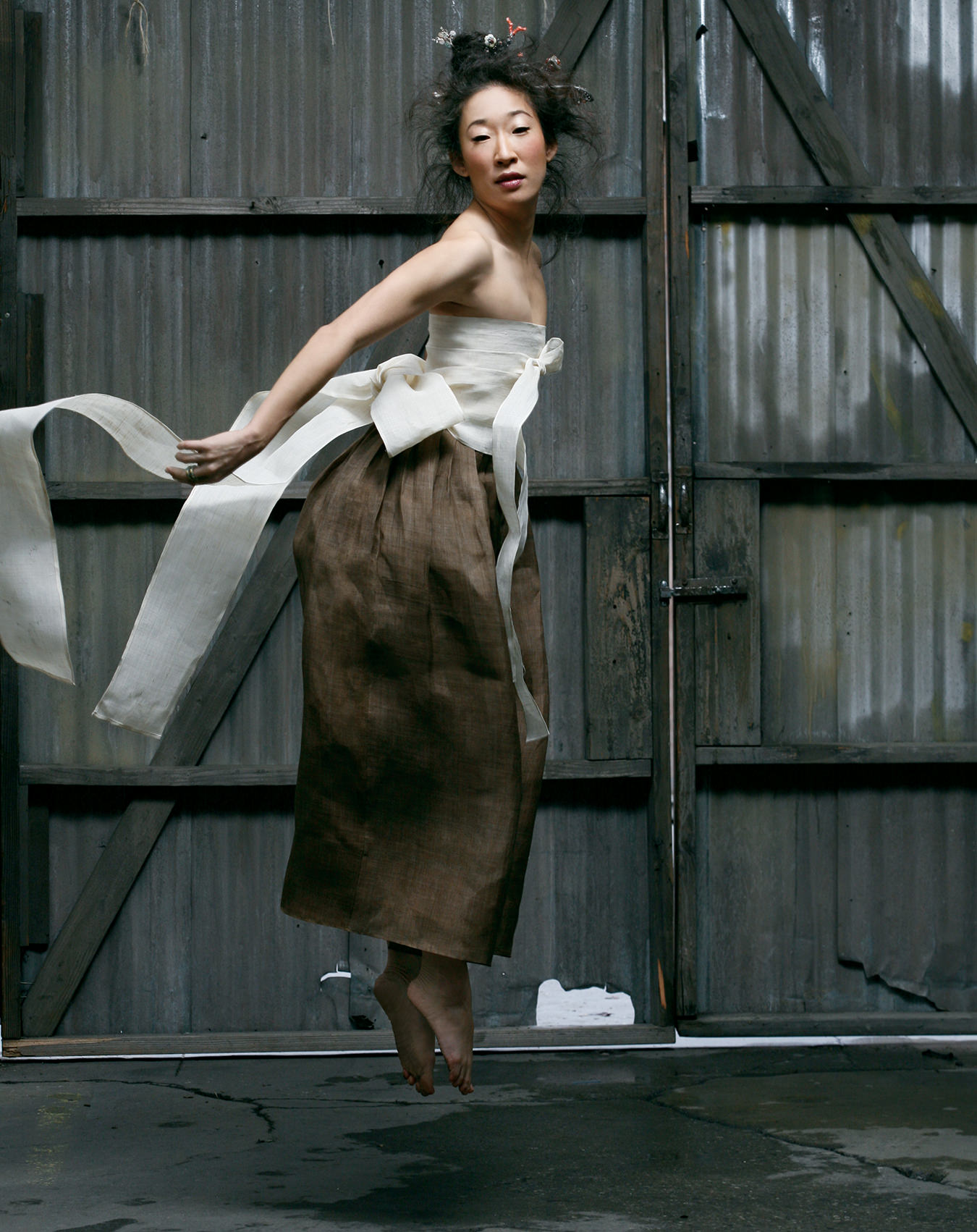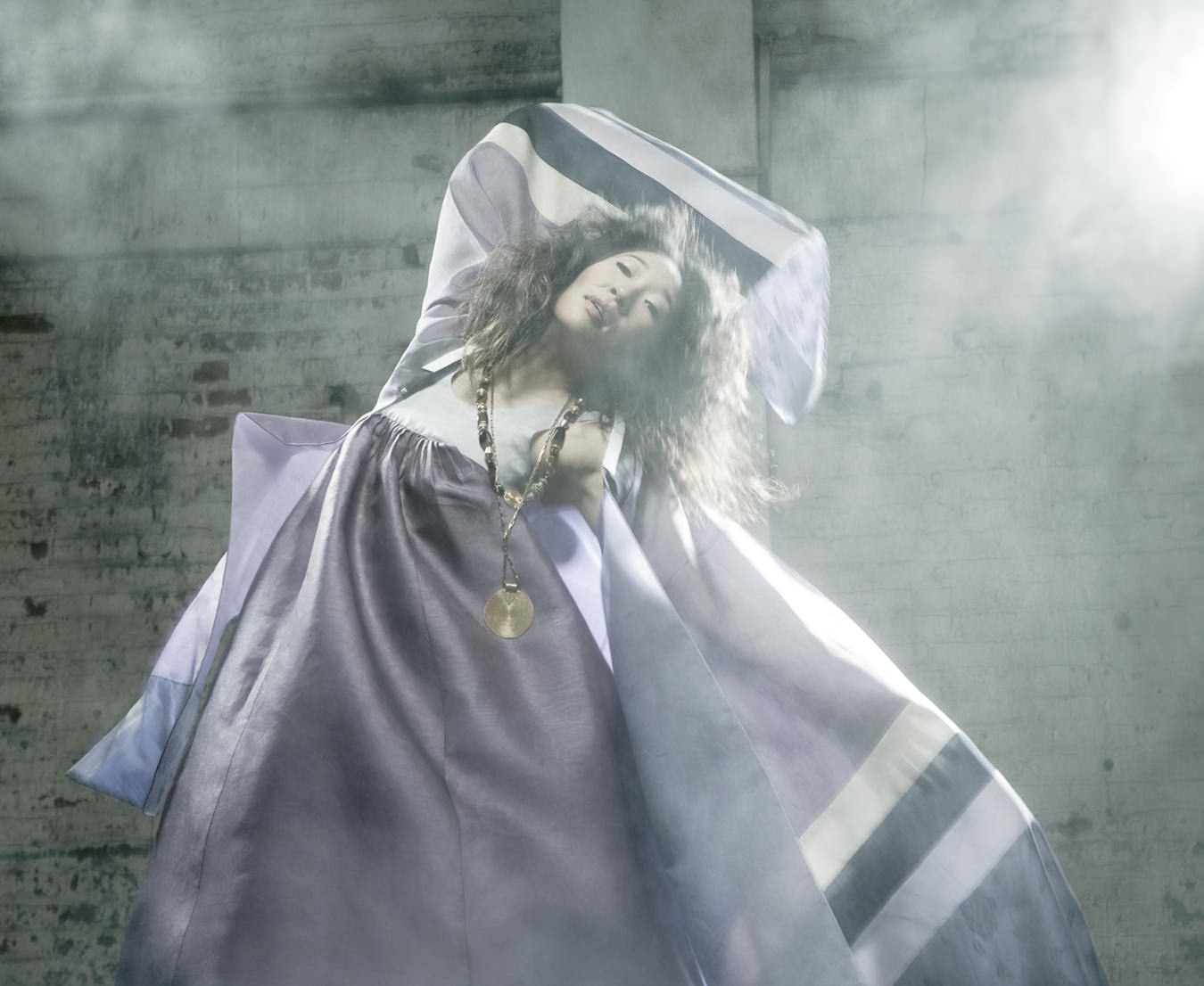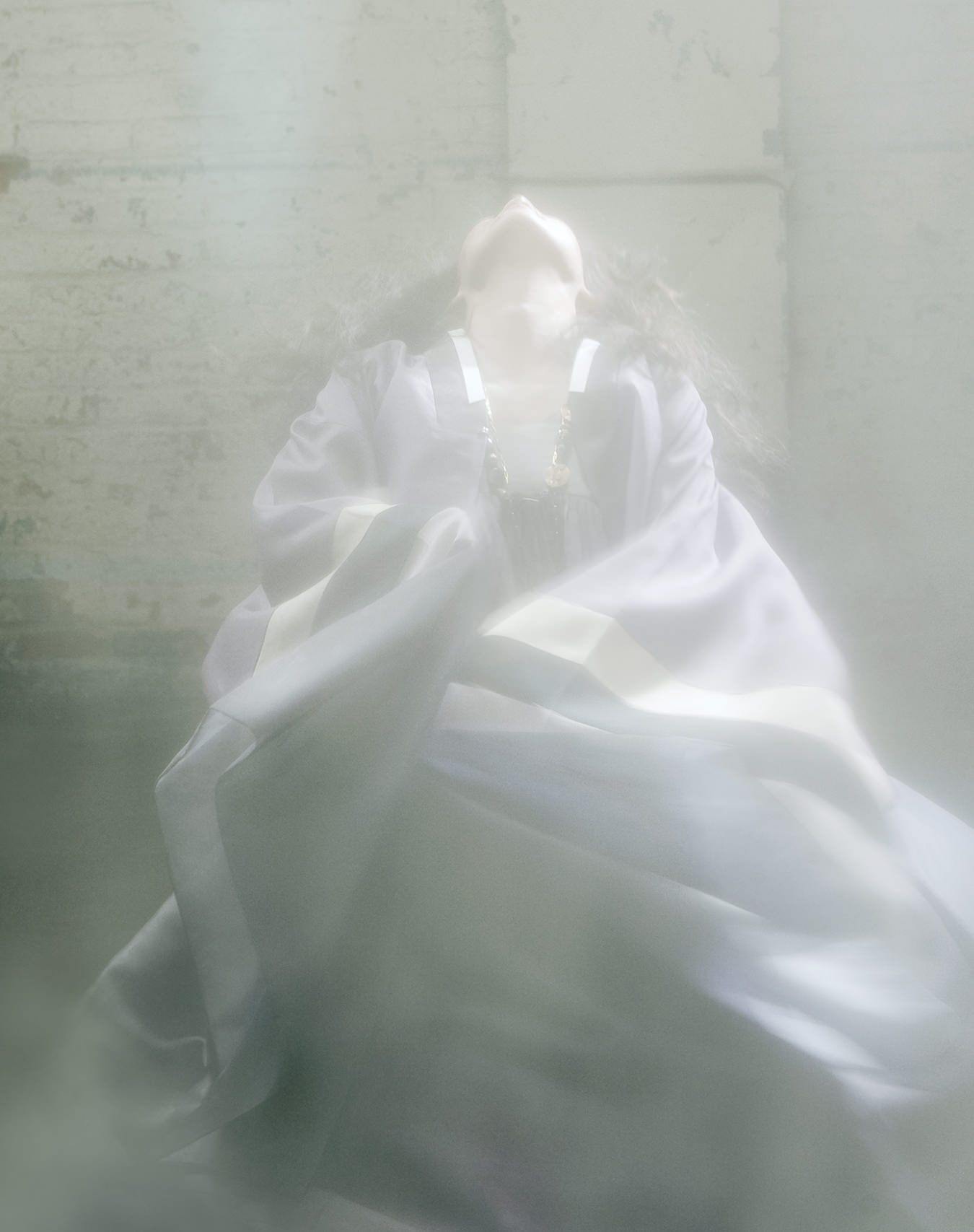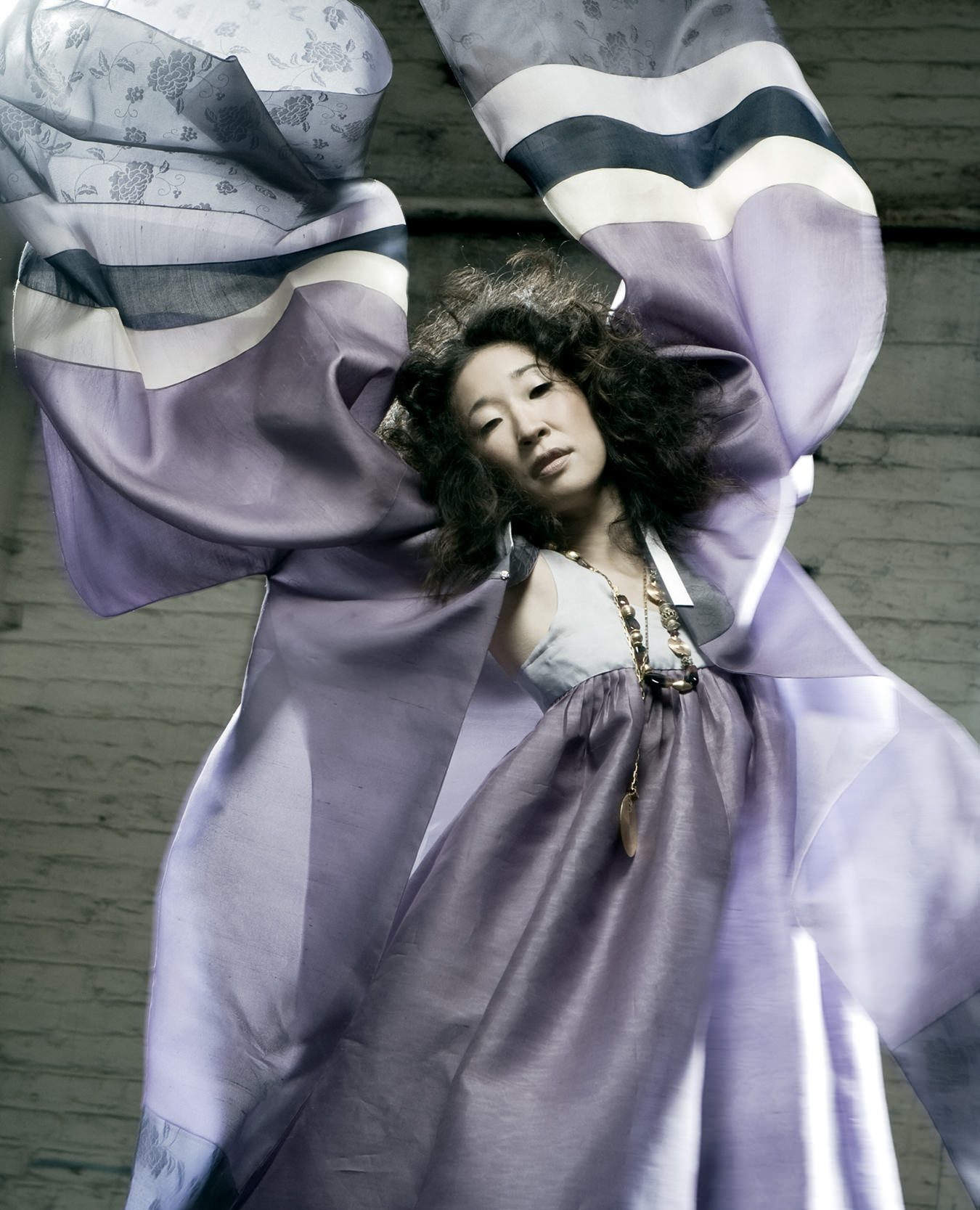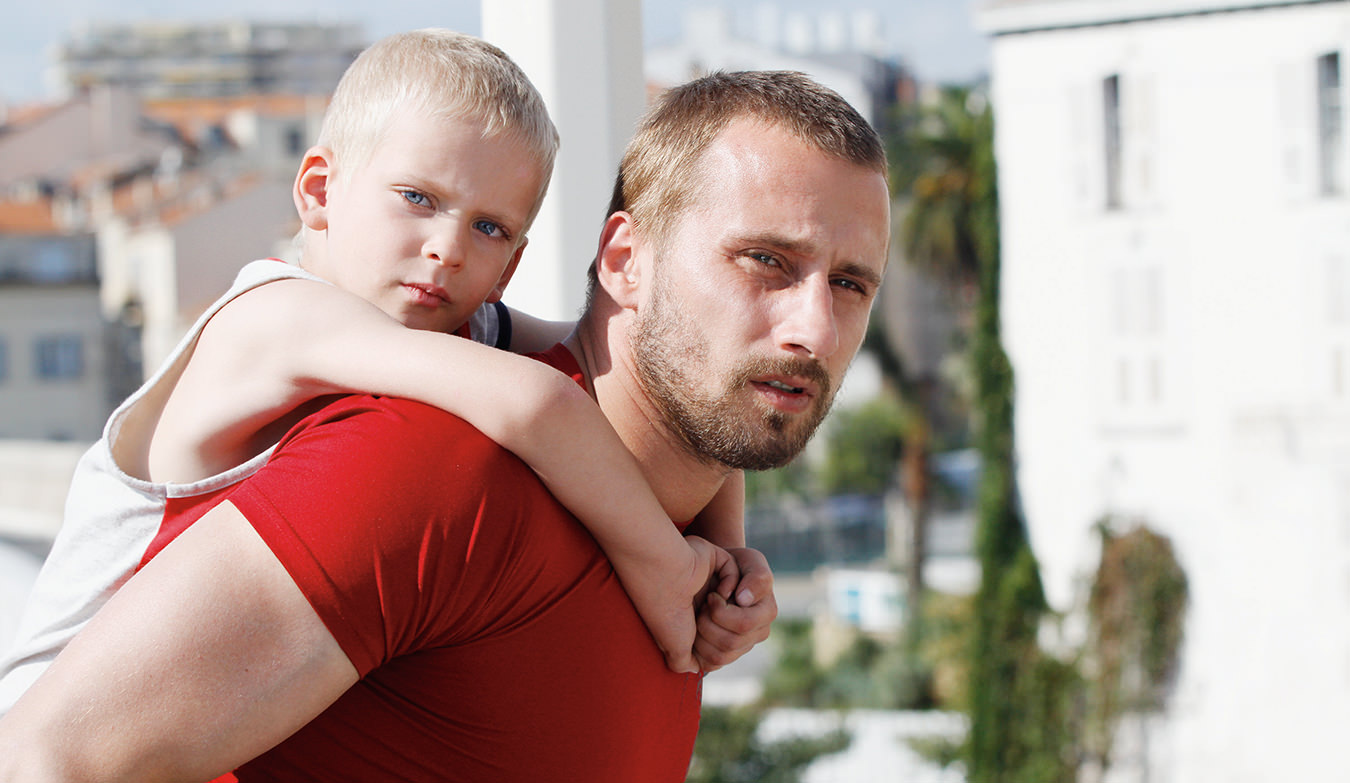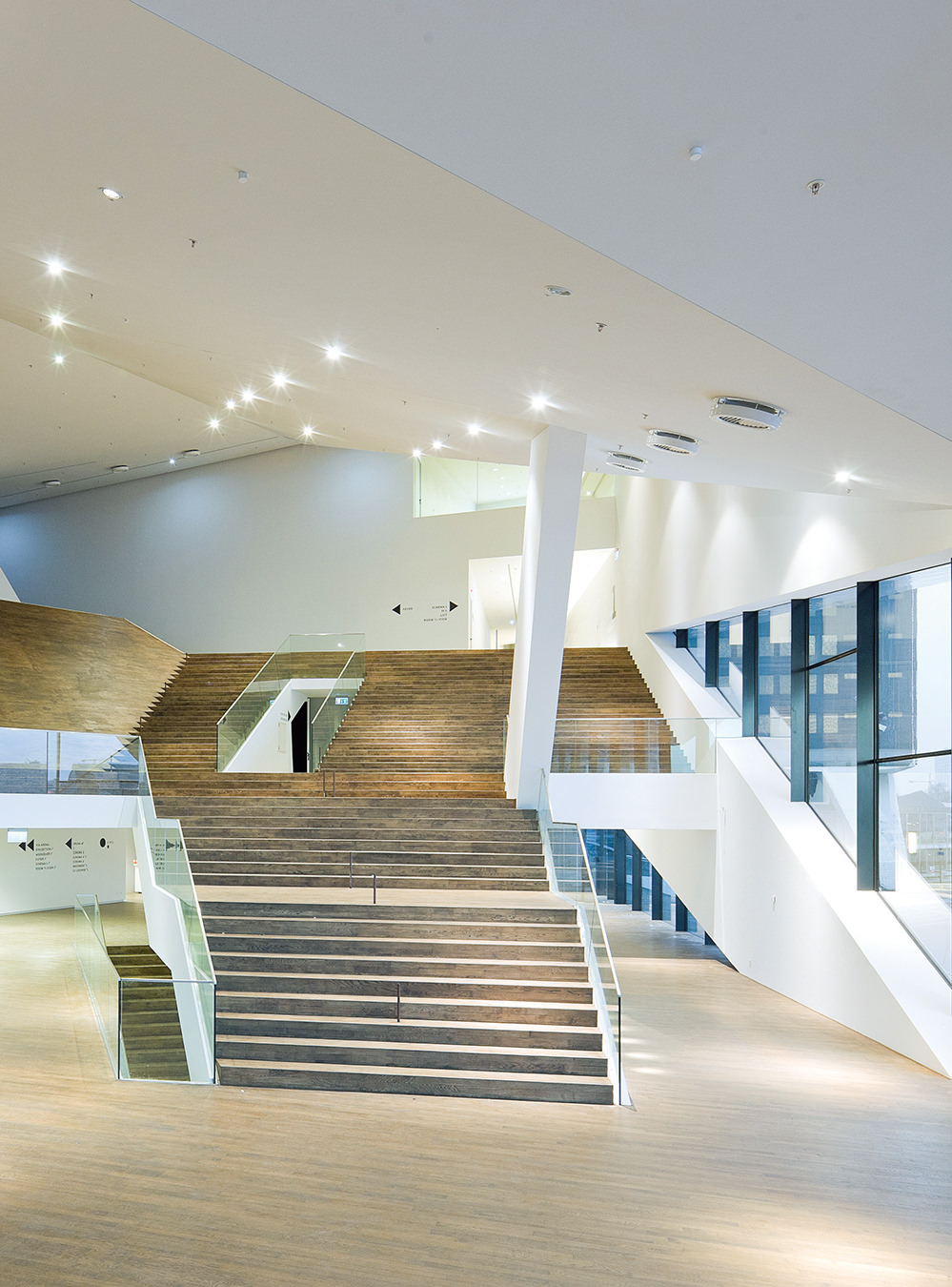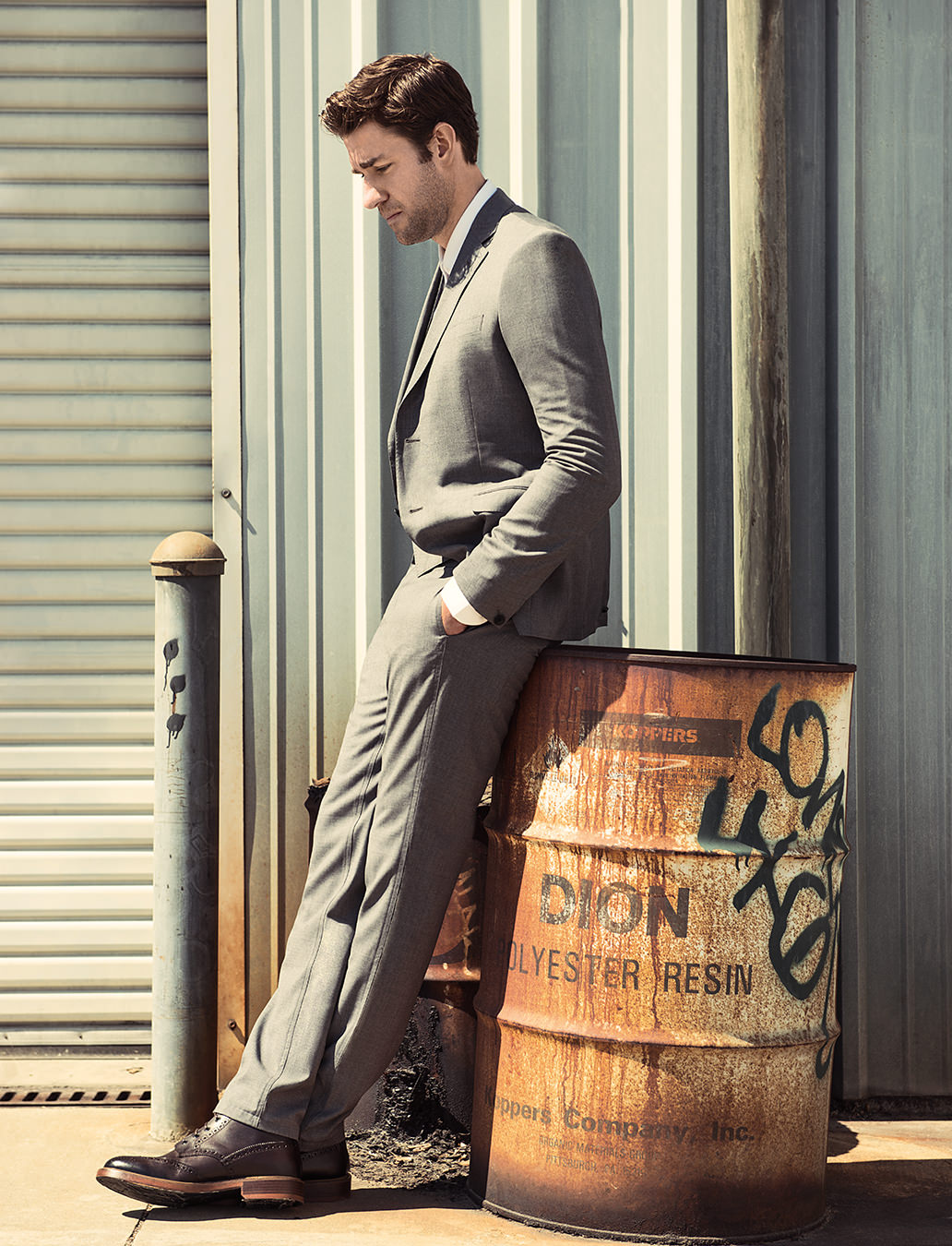Sandra Oh
Seoul sister.
Hanbok is a type of traditional Korean clothing worn on formal occasions. Typically crafted in silk with vibrant colours and seamless lines, the garments are spectacularly beautiful and luxurious—and thus are a remarkable contrast to the immediate setting: an old abandoned warehouse on the east side of Los Angeles.
I am watching Sandra Oh being photographed. It is her first ever photo shoot wearing hanbok, I learn, and she is, in a word, stunning. Groomers and dressers fuss and flit about, but paradoxically, the busier the warehouse gets, the more serene Sandra appears. At the peak of the hustle and bustle of the shoot, one look at her and I can almost believe that she’s the only one in the room. She is an oasis of calm and beauty.
I first meet Sandra at a little, nondescript vegan restaurant on Hollywood Boulevard. I wonder if she is a vegetarian, but no—she simply fancied the cuisine of this mom-and-pop spot, which was a pleasant surprise even to a non-vegetarian like me.
Sandra walks in wearing jeans, a sweater and no makeup—hanbok will come later. It’s past noon, and the place is nearly full as I motion her over to our table, where we exchange greetings. Her smile is warm, her gestures animated.
From the outset, Sandra is open and seemingly unhurried. She is spontaneous and has great energy; I predict that she will never lose the intrinsic youthfulness that surrounds her. We get the ordering out of the way, agreeing to share plates, and we chat, getting to know each other.
Anyone with a television would recognize Sandra from her love-to-hate character on Grey’s Anatomy, Dr. Cristina Yang, though her resumé is as varied as she is talented; literally dozens of television, film and stage appearances are testament to her versatility as a performer. Following lead roles in the HBO hit series Arli$$ and the critically lauded film Sideways, her role on Grey’s Anatomy cemented her status as a household name, and also won her a Golden Globe and a Screen Actor’s Guild Award. “I was at a point where I wasn’t going to take on any roles that weren’t essential to the plot,” she says, reflecting on her mindset when she auditioned for what was to become one of TV’s hottest shows. “I did work on films [prior to that], but felt frustrated that there was a lack of opportunity in film. TV was much more welcoming than film, so I decided that I would start auditioning for television again.”
Few know that Sandra was first asked to audition for the role of Dr. Miranda Bailey, a much harsher character. “I didn’t want that role after my Arli$$ character, and I learned that the role of Cristina Yang was still available. I absolutely thought [Cristina’s] role was really interesting, and one that I hadn’t played, so I said, ‘Listen—I’m not going to test for Bailey.’” It worked, and Sandra was cast as the serious, literal-to-a-fault doctor.
We talk briefly about her other roles, and in particular about Sideways, a special project for her for a number of reasons. For one, at the time she was married to the film’s director, Alexander Payne. For another, it was a surprise hit that accelerated the careers of all four leads: Sandra, Paul Giamatti, Thomas Haden Church and Virginia Madsen.
“It had all the ingredients,” she says regarding the film’s practically universal acclaim. “The script was great. The director was great. It was one of those productions where everything just worked. You can have one element be right but not the rest.” She smiles, remembering. “With Sideways, everything just came together.”
Sandra’s resumé is as varied as she is talented; literally dozens of television, film and stage appearances are testament to her versatility as a performer.
Sandra’s most recent film, Blindness, is scheduled for release later this year. Directed by Fernando Meirelles and based on a novel by Nobel Prize winner José Saramago, the story centres on a town where everyone mysteriously and suddenly goes blind. Sandra was acquainted with the screenwriter, Don McKellar, with whom she’d previously worked on the film Last Night, and she had wanted to be part of the movie. As a result, a small role was given additional lines in order to justify Sandra travelling from Los Angeles to Toronto for a day’s shoot. “If you blink, you might miss me,” Sandra jokes, “but I did it because I love the project and the people behind it.”
We talk about her work—past and future—and the directors she’s enjoyed working with, as well as those she’d like to work with at some point. “Well, Mina Shum, who directed me in Double Happiness, in 1994,” she says. “And [I’d like to work with] Children of Men director Alfonso Cuarón. I would also love to work with women directors like Sofia Coppola. I like the mood of her films, and they are not like the things I’ve done.” In terms of specific types of projects, she says, “A good comedy is harder to find than a good drama.” She would love to do more feature films, she says, and misses doing theatre.
In fact, Sandra’s acting roots began in the theatre, as she appeared in school plays beginning at age 10. She attended the prestigious National Theatre School of Canada in Montreal, and later starred in David Mamet’s play, Oleanna.
But her first big break came in 1993 with the CBC television movie The Diary of Evelyn Lau, a true story based on the life of the Canadian novelist and poet. Sandra played the titular Lau, a tortured teenager who runs away from her strict mother, becomes a prostitute and a drug addict, and then writes about it. One of her first on-camera roles following acting school, Sandra was chosen from 2,000 hopefuls for the lead role. The next year, she won a Genie Award for her role in the Canadian film Double Happiness, in which she played the lead character, Jade Li, a twentysomething torn between pleasing her parents and living her own life.
Though Sandra left Canada to move to Los Angeles in the mid-1990s to be on Arli$$, her love for Canada remains a constant, as evidenced by a desire to do more Canadian projects. “I would love to work more in Canada,” says Sandra, who currently films Grey’s Anatomy in L.A. “It is a shame that we Canadian actors don’t do more stuff there,” she says, explaining that, compared to Hollywood, there isn’t nearly as much work being produced. “It’s literally a numbers game, and it’s not big enough. … In Canada, it can be very difficult to make a living as an actor.” She misses her home and her family, and though she visits as often as she can, a television-production schedule can be gruelling.
Sandra’s parents, who are from South Korea, first came to Canada on student visas. Her father, John Oh, and her mother, Young Nam Oh, were university students, and eventually moved from Seoul in the early 1960s to continue their education at the University of Toronto. In the 1970s, they moved to Ottawa, where Sandra was born and raised.
The drive to succeed, which she shares with her two siblings (her brother, Raymond, is completing a Ph.D. in genetics in Toronto, and her sister, Grace, is a crown attorney in Vancouver), is something Sandra instinctively knew she possessed. As a child, she had a strong sense of athleticism and a passion for the arts, and studied both dance and acting.
Like many concerned parents, particularly those with Korean-immigrant sensibilities, Sandra’s knew the road to stardom would be neither easy nor assured; while they supported her dream, they were realistic about her chances of success. And although there are a few artists on her mother’s side, Sandra is the first in the family to break into performing.
She admits that she has felt “different” at times in her life because of her ethnicity, both growing up in Canada and later in Hollywood. But to Sandra, the feeling of being the “other” or the “outsider” has been both a blessing and a curse. It’s become a great source of strength and conviction. As an adult, she’s realized that this struggle has had immense significance in her life and has helped shape her belief system. According to Sandra, “Struggle is really, really important,” and character cannot be built without it. That is certainly true in Sandra’s case.
“For me, the struggle is confronting the belief systems that have shaped the idea that it is somehow a disadvantage not being white,” she explains. “To find out where they come from and then realizing that they have nothing to do with me. The struggle is to not repeat and relive the typical story of how tough and unfair it is. Don’t get me wrong, because it’s all true,” she says, interrupting herself, “but I’m not interested in that. I’m trying to start at the beginning, with why that struggle even exists and what’s behind it. Questioning how to imagine and be beyond the ‘struggles’ with ethnicity—I don’t know what that is yet, but I’m trying.”
And no matter which piece Sandra dons, she is a cyclone of fabrics and colours. She’s not posing; rather, she is telling a story with each outfit, each movement, and each mood for the lens to capture.
When she was 20, she lost a part to a blond actor in a production of A Midsummer Night’s Dream. Devastated, Sandra remembers crying in her mother’s lap. It was at that point that her mother said, “You know I don’t care about this stuff, but maybe it wouldn’t hurt for you to look the way they want you to look.”
Her mother had reached the difficult decision to suggest that perhaps Sandra ought to consider getting plastic surgery to obtain a Western—and therefore more “marketable”—appearance if she was to continue on her quest to become an actor. Her mother was not an advocate of plastic surgery in the least; rather, it was a show of support to do what was needed to help her daughter’s dream become real. She thought changing Sandra’s looks could improve the odds of her getting roles in the film industry.
“I remember going to the plastic surgeon in Korea and being told that the lower half of my face was like that of a woman, but that the upper half of my face was non-gender specific,” says Sandra. “He said I was the perfect candidate.”
And she almost went through with it. But one day while on the subway with her then-teenaged brother, who had never said anything to her about her upcoming surgery, she asked, “Raymond, what should I do?”
Sandra recalls, “He looked at me and said, ‘You know you got that other part [in The Diary of Evelyn Lau], right? So I don’t think you need it.’” With those few words, something in Sandra clicked, and she decided not to go ahead with the surgery.
How great it is that she did. In retrospect, “If anything had been different in any way in my life, I wouldn’t be here now. When you have a strong will to be authentic, it’s both good and bad, but what I trust—the raison d’être, if you will—is larger, much larger than what I know.”
In this abandoned warehouse in Los Angeles is a convergence of artists with a variety of unique talents. The person who designed the gowns, the hairstylist, the makeup artist, the photographer and her crew—all are focused on Sandra. And no matter which piece she dons, she is a cyclone of fabrics and colours. She’s not posing; rather, she is telling a story with each outfit, each movement and each mood for the lens to capture. As our day draws to a close, it is unfortunate to have to pack it all up.
Sandra has her own point of view and personal style, and a determination to be her own authentic self. Today, here, there is no “outsider”, no “other”. Although her journey has been anything but easy, she’s triumphed in the best way possible: her own.
Photo Direction: Sandra Zarkovic. Assistant Stylist: Jenny Ricker for the Wall Group. Hair: Jenny Cho for the Wall Group. Assistant Hair: Robert Mefford for the Wall Group. Makeup: Vanessa Scali for Tracey Mattingly. Assistant: David Jackson. Digital Technician: Christine Spindler.
________
Never miss a story. Sign up for NUVO’s weekly newsletter here.

